
The development of University Heights gave the esteemed Stanford White the opportunity to design a set of buildings with one vision. The campus would become an exhibit of the architect's talents.
In 1892 MacCracken contacted Stanford White, a partner at the most renowned architectural firm at the time, McKim, Mead and White, asking him to design the University Heights campus. White jumped at the chance to work on such a large-scale project.
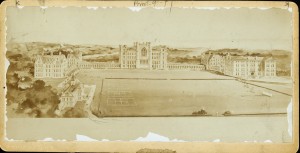
This plan, sketched by McKim, Mead and White, features the University Building at the center of the quadrangle. The estimated cost of $257,000 to move the building, made MacCracken opt for constructing 4 or 5 new buildings for roughly the same price.
White initially envisioned a quadrangle, an enclosed area with a courtyard or grassy interior, with the gothic University Building from the Washington Square campus at its center. The cost of transporting the building and reassembling it uptown proved too high though.
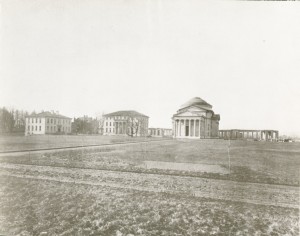
Early photograph of the quadrangle. The domed structure is the Gould Memorial Library. On its left is the Hall of Languages, situated next to the Havemeyer Hall for Chemistry.
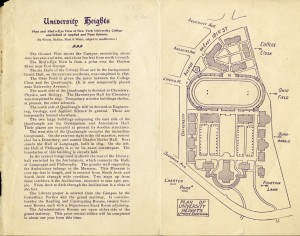
McKim, Mead and White's proposed plan, c. 1895. At the time this was presented, the Havemeyer Hall for Chemistry and the Hall of Languages, both designed by White, had been completed.
White still kept the quadrangle at the heart of his design. Instead of the gothic University Building as the centerpiece, White envisioned a domed structure that would become the Gould Memorial Library, considered by many architectural critics to be White’s most beautifully designed building.
A number of Stanford White’s influences came from English and American college campuses. Most notably, Oxford, Cambridge and the University of Virginia.
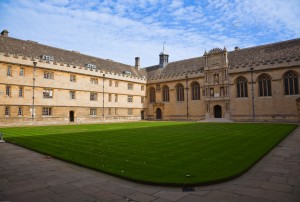
The quadrangle at Wadham College, Oxford University. A number of American universities looked to English colleges for inspiration as a way to capture the "collegiate" feeling associated with these campuses. Courtesy of ukexpat, Wikimedia Commons.
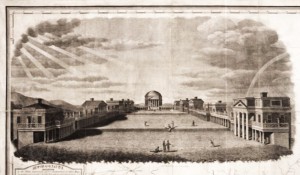
University of Virginia, 1826. Thomas Jefferson designed UVA using a quadrangle as well, later nicknamed The Lawn. The library, also designed by Jefferson, is featured in the center. Courtesy of the Library of Congress.
